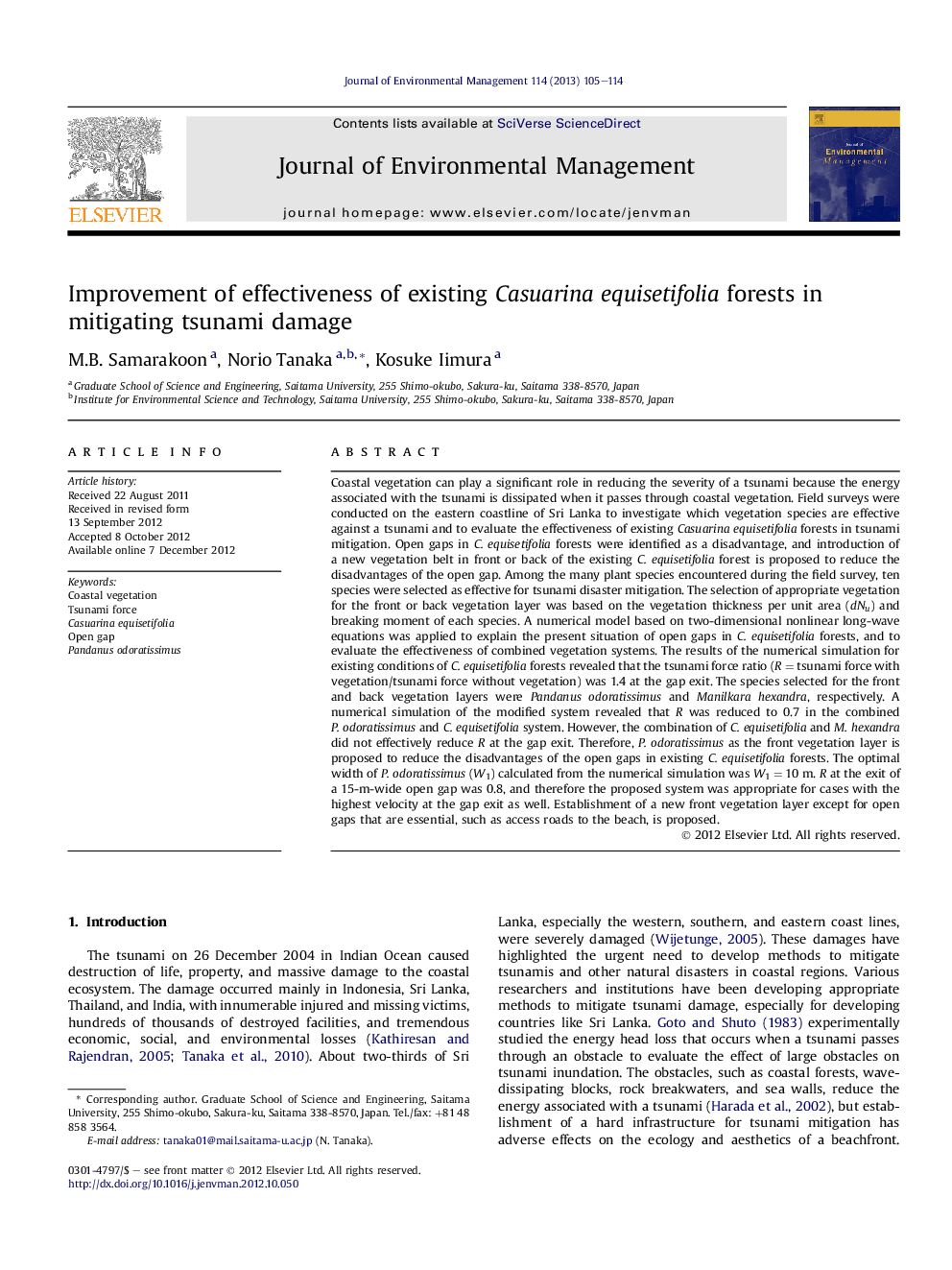| کد مقاله | کد نشریه | سال انتشار | مقاله انگلیسی | نسخه تمام متن |
|---|---|---|---|---|
| 1056585 | 1485298 | 2013 | 10 صفحه PDF | دانلود رایگان |

Coastal vegetation can play a significant role in reducing the severity of a tsunami because the energy associated with the tsunami is dissipated when it passes through coastal vegetation. Field surveys were conducted on the eastern coastline of Sri Lanka to investigate which vegetation species are effective against a tsunami and to evaluate the effectiveness of existing Casuarina equisetifolia forests in tsunami mitigation. Open gaps in C. equisetifolia forests were identified as a disadvantage, and introduction of a new vegetation belt in front or back of the existing C. equisetifolia forest is proposed to reduce the disadvantages of the open gap. Among the many plant species encountered during the field survey, ten species were selected as effective for tsunami disaster mitigation. The selection of appropriate vegetation for the front or back vegetation layer was based on the vegetation thickness per unit area (dNu) and breaking moment of each species. A numerical model based on two-dimensional nonlinear long-wave equations was applied to explain the present situation of open gaps in C. equisetifolia forests, and to evaluate the effectiveness of combined vegetation systems. The results of the numerical simulation for existing conditions of C. equisetifolia forests revealed that the tsunami force ratio (R = tsunami force with vegetation/tsunami force without vegetation) was 1.4 at the gap exit. The species selected for the front and back vegetation layers were Pandanus odoratissimus and Manilkara hexandra, respectively. A numerical simulation of the modified system revealed that R was reduced to 0.7 in the combined P. odoratissimus and C. equisetifolia system. However, the combination of C. equisetifolia and M. hexandra did not effectively reduce R at the gap exit. Therefore, P. odoratissimus as the front vegetation layer is proposed to reduce the disadvantages of the open gaps in existing C. equisetifolia forests. The optimal width of P. odoratissimus (W1) calculated from the numerical simulation was W1 = 10 m. R at the exit of a 15-m-wide open gap was 0.8, and therefore the proposed system was appropriate for cases with the highest velocity at the gap exit as well. Establishment of a new front vegetation layer except for open gaps that are essential, such as access roads to the beach, is proposed.
► Open gaps in Casuarina equisetifolia forests were identified as a disadvantage.
► A vegetation belt in front of the existing forest is proposed to overcome this.
► The species selected for the front vegetation layer was Pandanus odoratissimus.
► The optimal width of P. odoratissimus calculated from the numerical model was 10 m.
► The proposed system was fit for cases with the highest velocity at the gap exit.
Journal: Journal of Environmental Management - Volume 114, 15 January 2013, Pages 105–114